Welcome to On Verticality. This blog explores the innate human need to escape the surface of the earth, and our struggles to do so throughout history. If you’re new here, a good place to start is the Theory of Verticality section or the Introduction to Verticality. If you want to receive updates on what’s new with the blog, you can use the Subscribe page to sign up. Thanks for visiting!
Click to filter posts by the three main subjects for the blog : Architecture, Flight and Mountains.
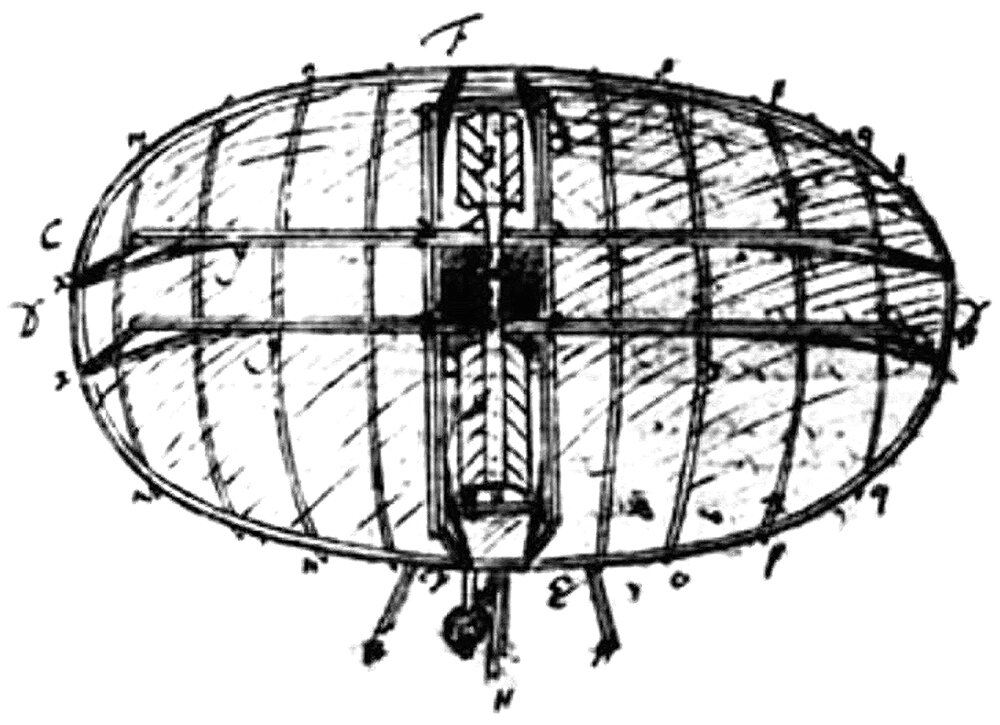
Emanuel Swedenborg’s Glider Sketch
The earliest examples of flying machines are from one of two sources. The first are fictional sources, such as myths or epics, and the second are exploratory sketches from great thinkers of their time, such as Leonardo da Vinci. The sketch above is an example of the latter, and it was sketched in 1714 by Emanuel Swedenborg, a Swedish polymath known for his theological works. The design is a combination of a glider and an ornithopter, and he sketched it in one of his notebooks with full knowledge that it could never fly.
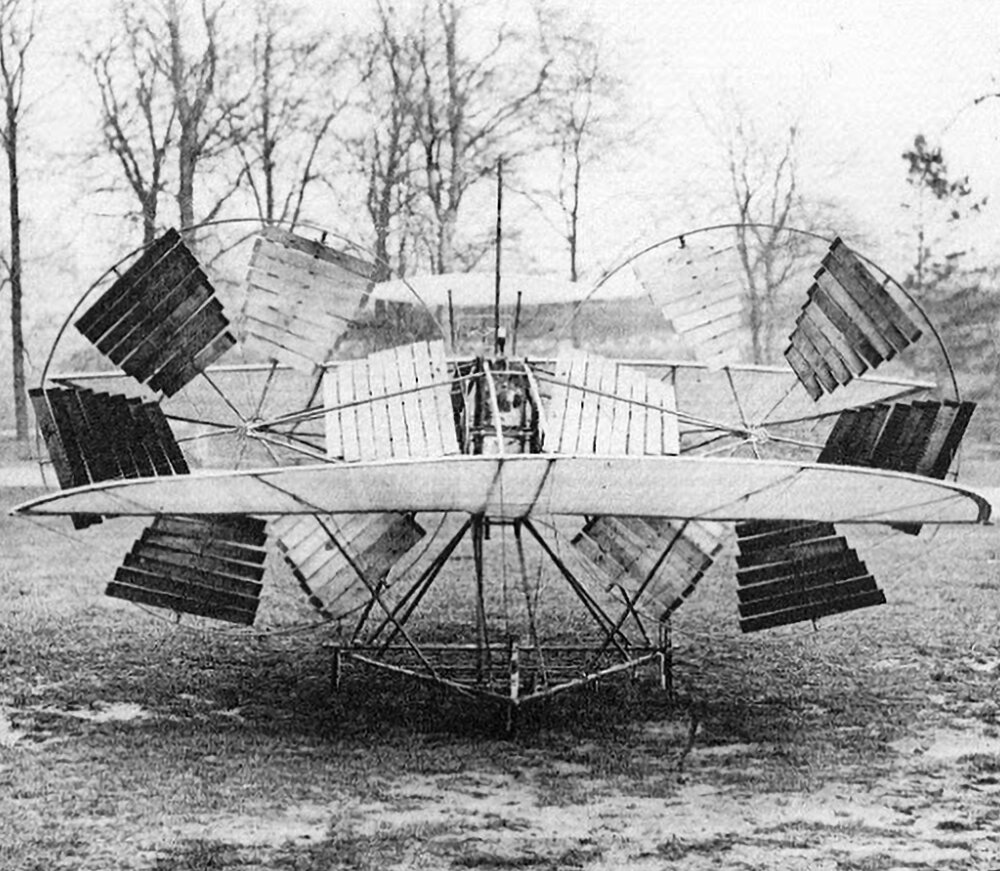
Thomas Moy’s Aerial Steamer
Pictured above is Thomas Moy’s 1875 design for a flying machine, called the Aerial Steamer. It’s an unmanned tandem wing aircraft, with two pairs of wings: one pair at the front and one pair at the rear. Between the two pairs of wings were two massive propellers, which were made of wooden slats in a helix-like pattern that was designed to provide upward and forward lift simultaneously.
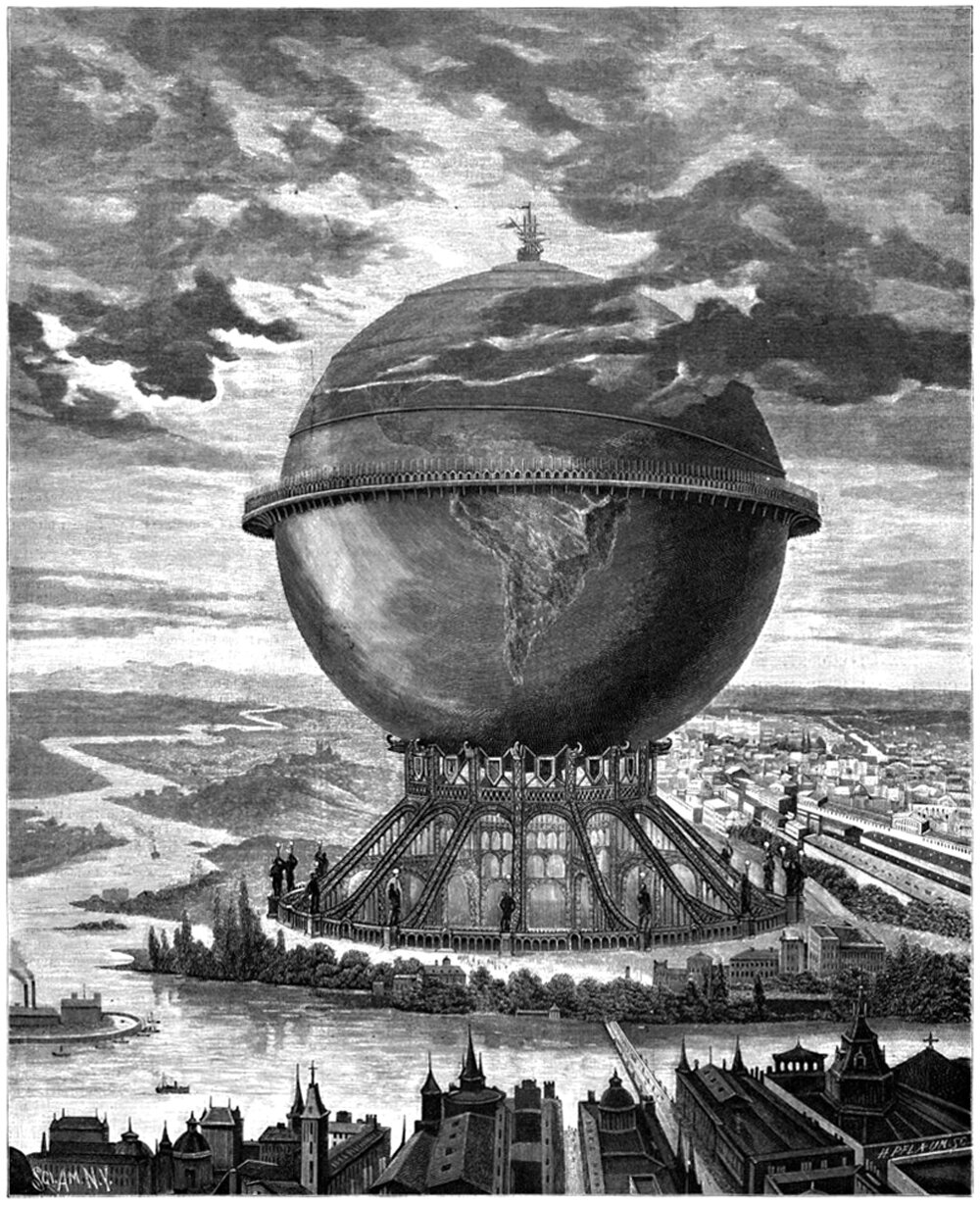
Alberto de Palacio’s Monument to Christopher Columbus
The phenomenal success of the Eiffel Tower has impressed upon the projectors of coming exhibitions the idea that they must strive to rival (if not to surpass) that unique structure by some colossal monumental work. This is the first sentence of an article from 1891 announcing the proposal pictured above. It was a monument to Christopher Columbus, and it was designed by Spanish engineer Alberto de Palacio, to be built for the 1893 World’s Fair in Chicago.
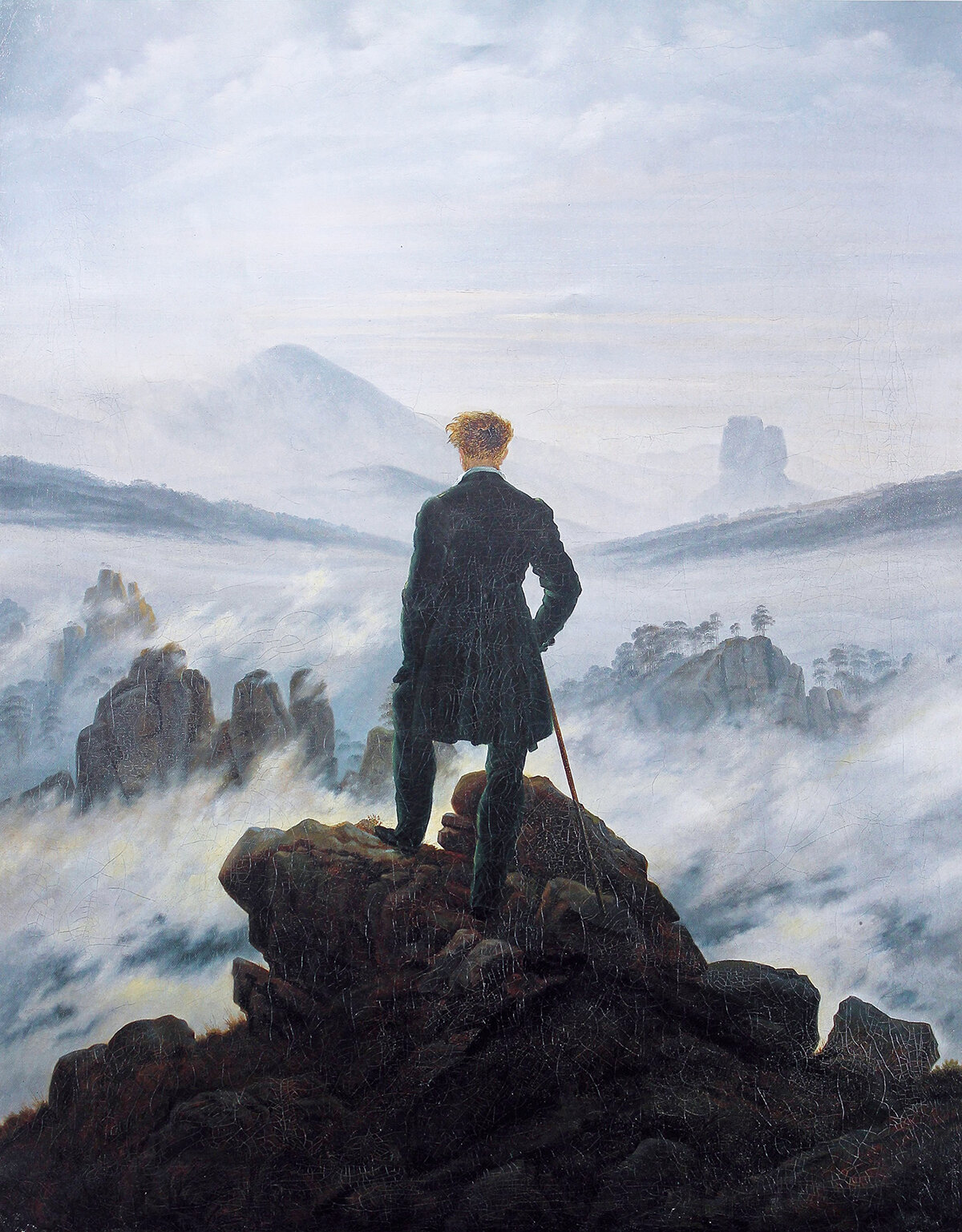
Caspar David Friedrich’s Wanderer Above the Sea of Fog
Climbing to the top of a mountain is the closest a person can get to escaping the earth’s surface without taking flight. It’s a triumph over gravity, and it gives the climber a great sense of accomplishment as well as a command over the surrounding landscape. This painting encapsulates all of this beautifully. It was painted around 1818 by Caspar David Friedrich, and it’s called Wanderer Above the Sea and Fog.
“Every one must know the feeling of triumph and pride which a grand view from a height communicates to the mind”
-Charles Darwin, English biologist, 1809-1882.

A Design for Converting The Crystal Palace Into A Tower 1000 Feet High
Most people familiar with the history of modern architecture know the Crystal Palace. It was built in Hyde Park, London for the Great Exhibition of 1851, and it was designed by Joseph Paxton. What most people don’t know, however, is another architect took the pieces of the Crystal Palace and re-arranged them into a supertall tower proposal. It wasn’t built, of course, but it’s a fascinating proposal that takes advantage of the temporary nature of the original building.
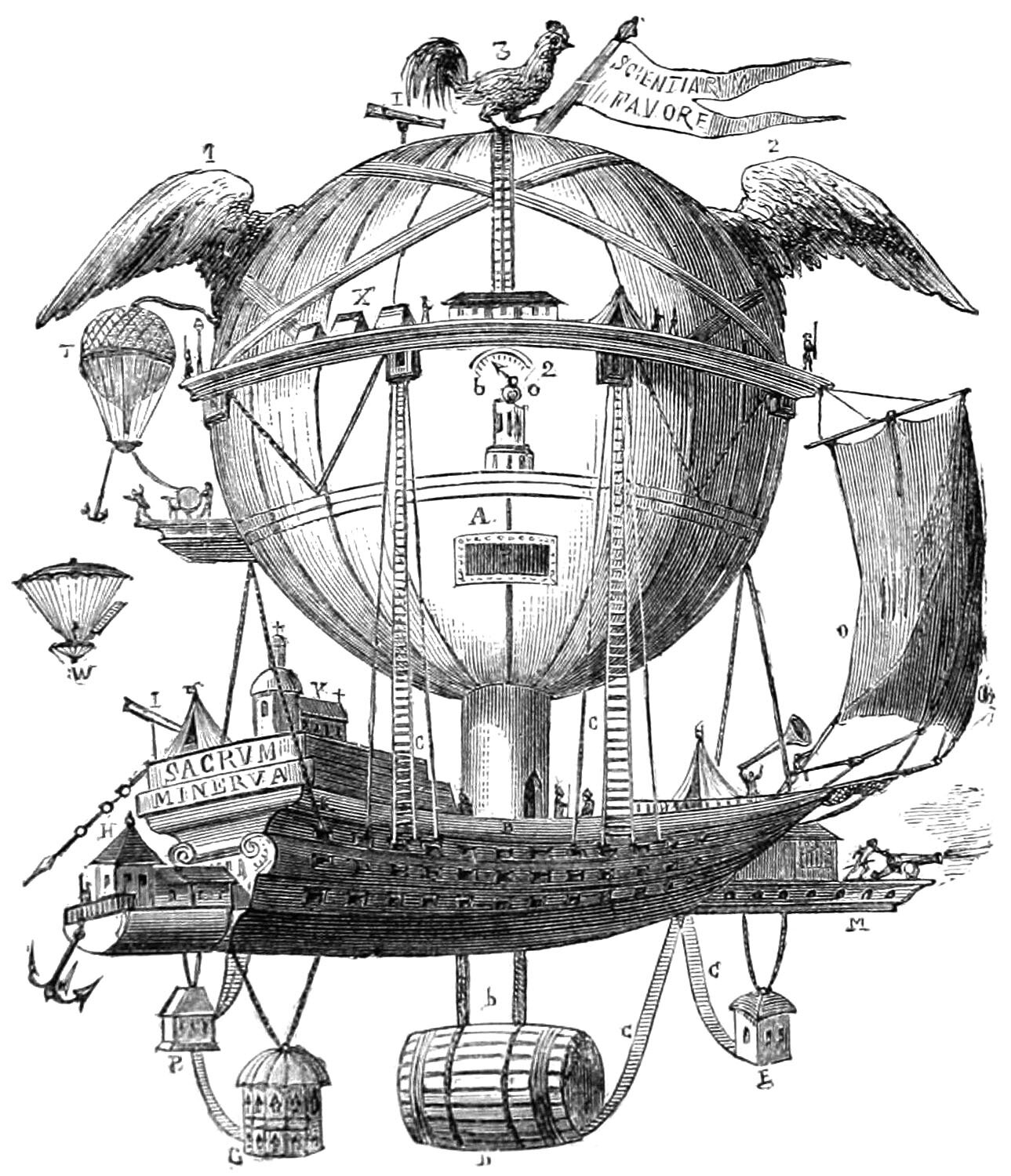
Étienne Gaspard Robert’s La Minerve Airship
Pictured above is an airship design from 1803 by Étienne Gaspard Robert. Robert was a Belgian stage magician and physicist, and he also designed and flew balloons. His most famous design, called La Minerve, is pictured above. It was meant to be an exploratory vessel which would make multi-month trips around the world. Robert described the craft as an aerial vessel destined for discoveries, and proposed to all the Academies of Europe. It’s impractical, naïve, and amazing.
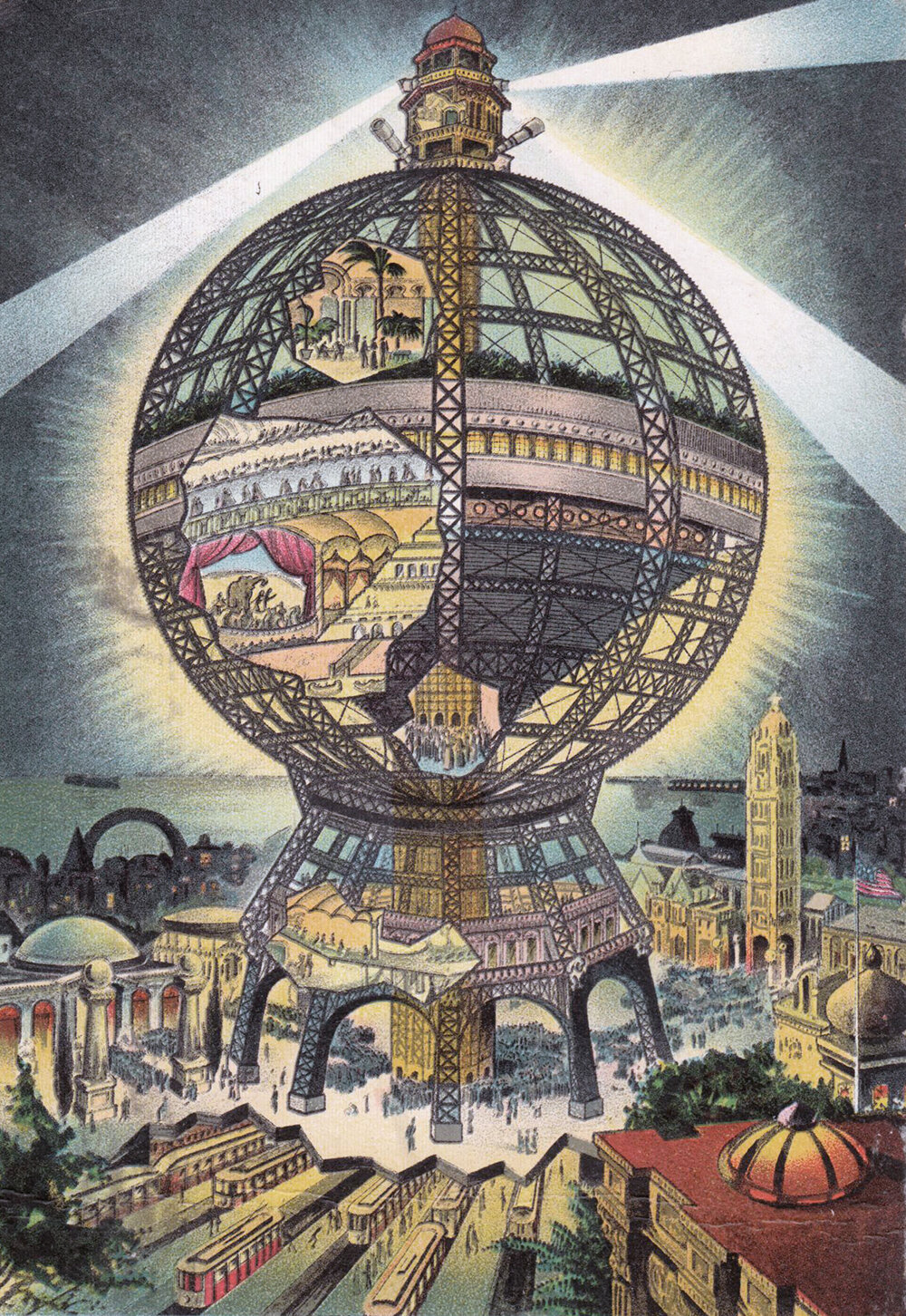
The Coney Island Globe Tower
Pictured above is the Coney Island Globe Tower, proposed in 1906 by Samuel Friede for a lot at the corner of Steeplechase Park in Coney Island, Brooklyn. The building features an enormous globe built of latticed steel, similar in style to the Eiffel Tower. The Globe was designed as an entertainment and leisure complex, and it was marketed as the second tallest building in the world, behind the aforementioned Eiffel Tower. The most intriguing part of the proposal, however, is that it was a fraud.

Anecdotes : Mountain Climbing and Verticality
I took the above photo on a recent hike up Mount Washington in the White Mountains of New Hampshire. I was at the Lake of the Clouds, which is a small pond near the summit. The ascent up the mountain brought me face-to-face with some of the most breath-taking and unforgiving landscapes I’ve ever experienced. It was an intensely personal experience, and I still find myself struggling for the words to describe my feelings throughout the climb. It also helped me to understand a few aspects of the human need for verticality, and I’ll explore them in the following paragraphs.
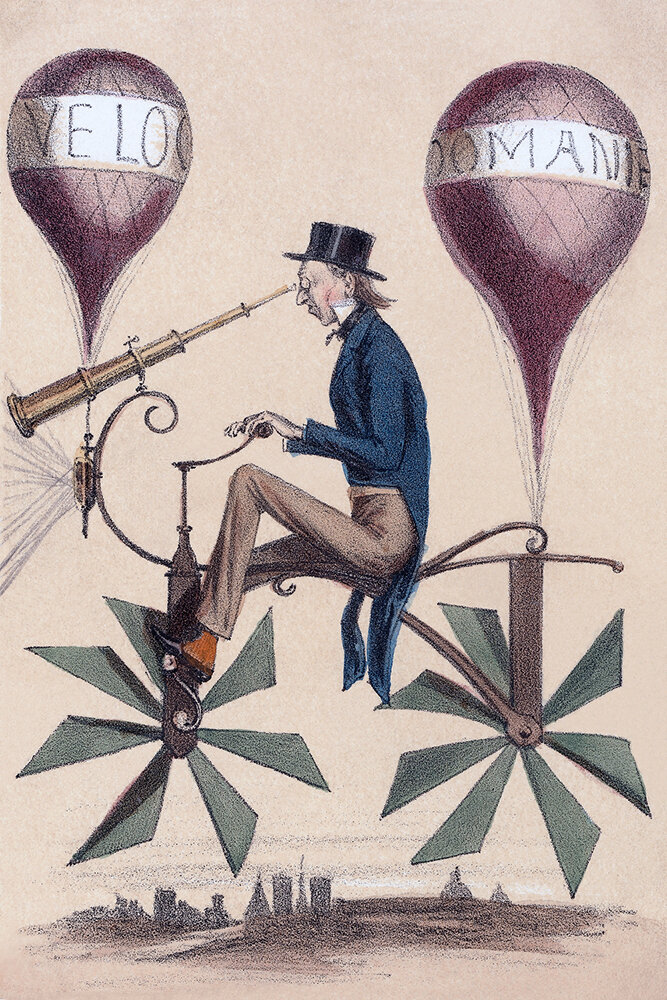
A Voyage to the Moon
There’s a fine line between fiction and invention. Throughout my research into flying machines, I’ve come across many fictional designs that weren’t meant to actually fly, but to evoke the idea of flight. The above cartoon is one of these. It’s a French cartoon from 1867, titled Voyage a la Lune, or Voyage to the Moon. It riffs on the idea of a bicycle that flies, and it’s got a playful feeling about it, as if it doesn’t take itself seriously.
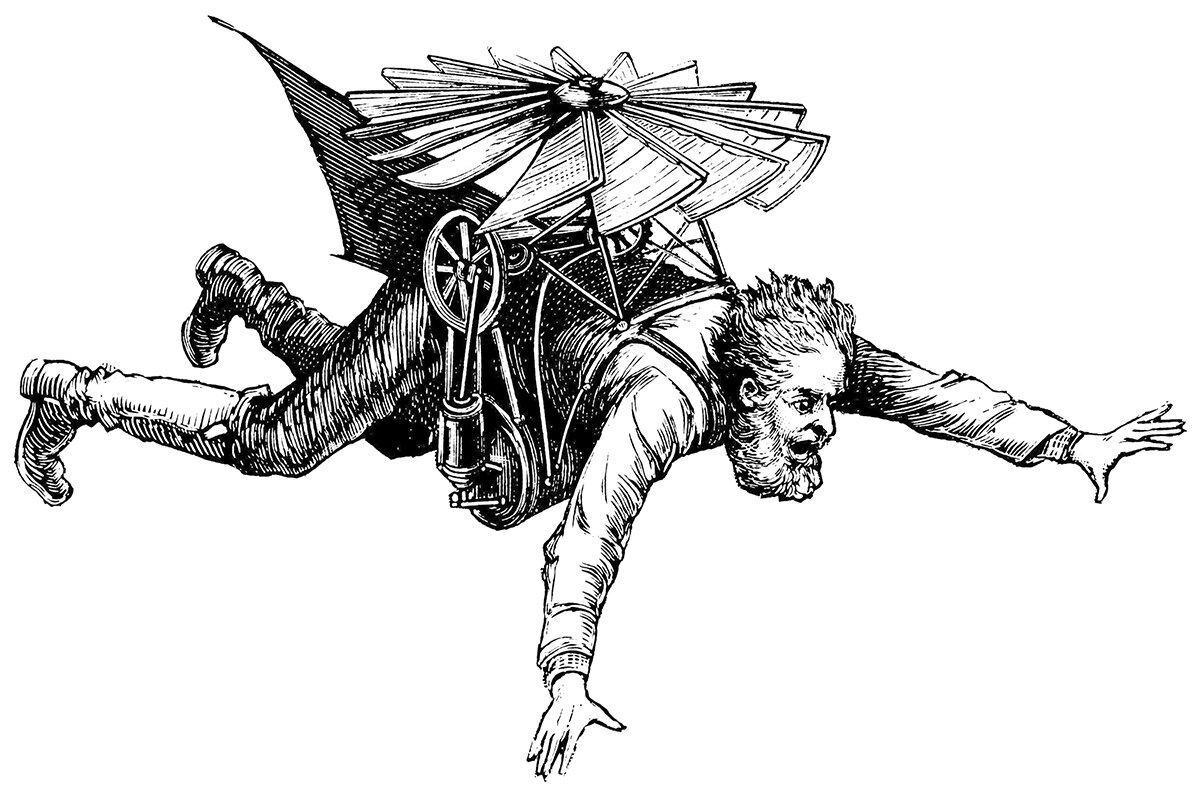
Those Wacky Victorian Flying Machines
Throughout my research into the history of flight and flying machines, I’ve come across a few examples that I cannot find any description or context for. I’m calling them Victorian because they’re illustrated in a similar style to that time period, but I’ve been unable to date them with any certainty. If anyone has any information about these contraptions or their creators, please let me know!
“This is the human paradox of altitude: that it both exalts the individual mind and erases it. Those who travel to mountain tops are half in love with themselves, and half in love with oblivion.”
-Robert Macfarlane, British author, born 1976

A Suggestion for a Flying Machine
The above illustration appeared in an 1877 issue of The Graphic, with the simple headline “A Suggestion for a Flying Machine”. Without any context or description, we can only take the image at face value. The machine seems to be lifted by a group of balloons placed centrally between two large wings, and the pilot dangles from a pole at the center of it all. Said pole has a tail behind it, and the pilot’s arms and legs control the tail and the wings, respectively.

Henson & Stringfellow’s Aerial Steam Carriage
This is the Aerial Steam Carriage, patented in 1842 by William Samuel Henson and John Stringfellow. It’s a monoplane that marked a transition from gliders to self-powered machines in the human quest for flight. It’s hard to tell from the picture, but the design is quite large, with a 45 meter (150 foot) wingspan, and it weighed around 1,400 kg (3,000 pounds). Henson and Stringfellow designed the Carriage to transport 10-12 passengers, but it would’ve been too heavy to fly with the steam engine they specified.

Leonardo da Vinci’s Saint John the Baptist
This is Leonardo da Vinci’s painting Saint John the Baptist, painted near the end of da Vinci’s life and career, sometime around 1515. It shows the saint, dimly lit against a dark background and gesturing with his right hand up to the sky. His upward gesture is the focus of the work, since his arm is the closest to the frame, and also the brightest part.
‘We lack the wings to fly, but will always have the strength to fall.’
-Paul Claudel, French poet, 1868-1955
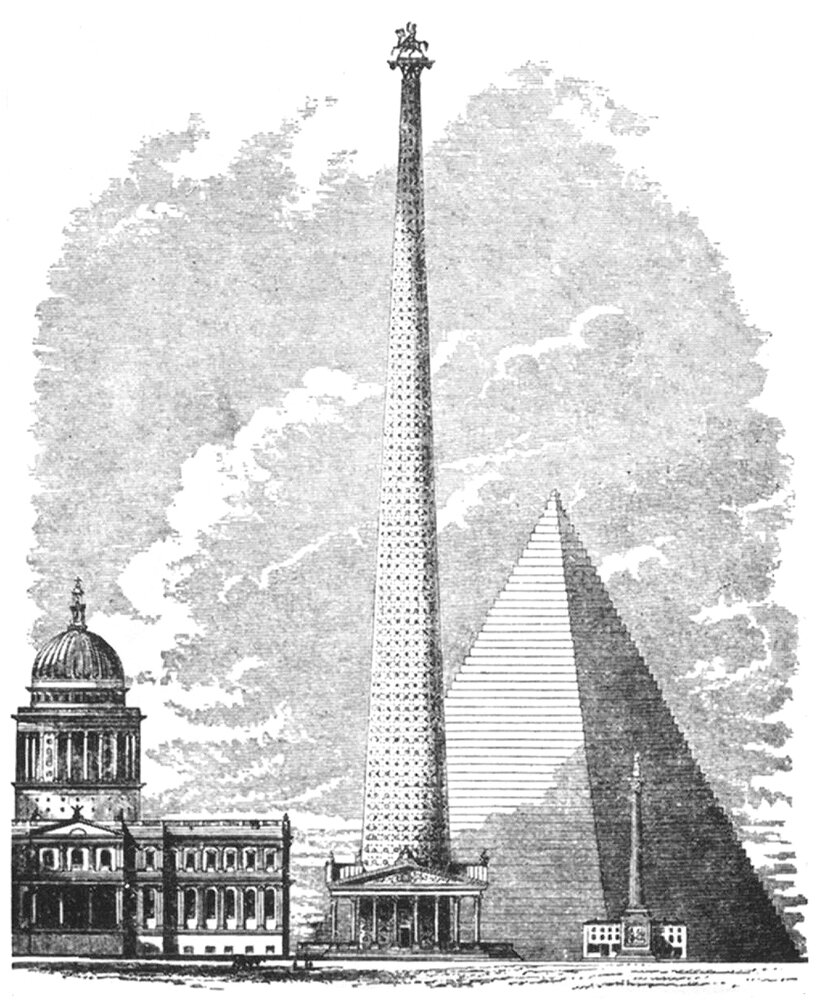
Richard Trevithick’s Monument to the Reform Act
This is Richard Trevithick’s Monument to the Reform Act, proposed in 1832 for a site somewhere in London. It was meant to be 1,000 feet (304 meters) tall, and it would’ve towered over the entire cityscape at the time. It’s one of a few tower proposals that aimed for the landmark 1,000-foot height, long before the Eiffel Tower made it a reality in 1889.
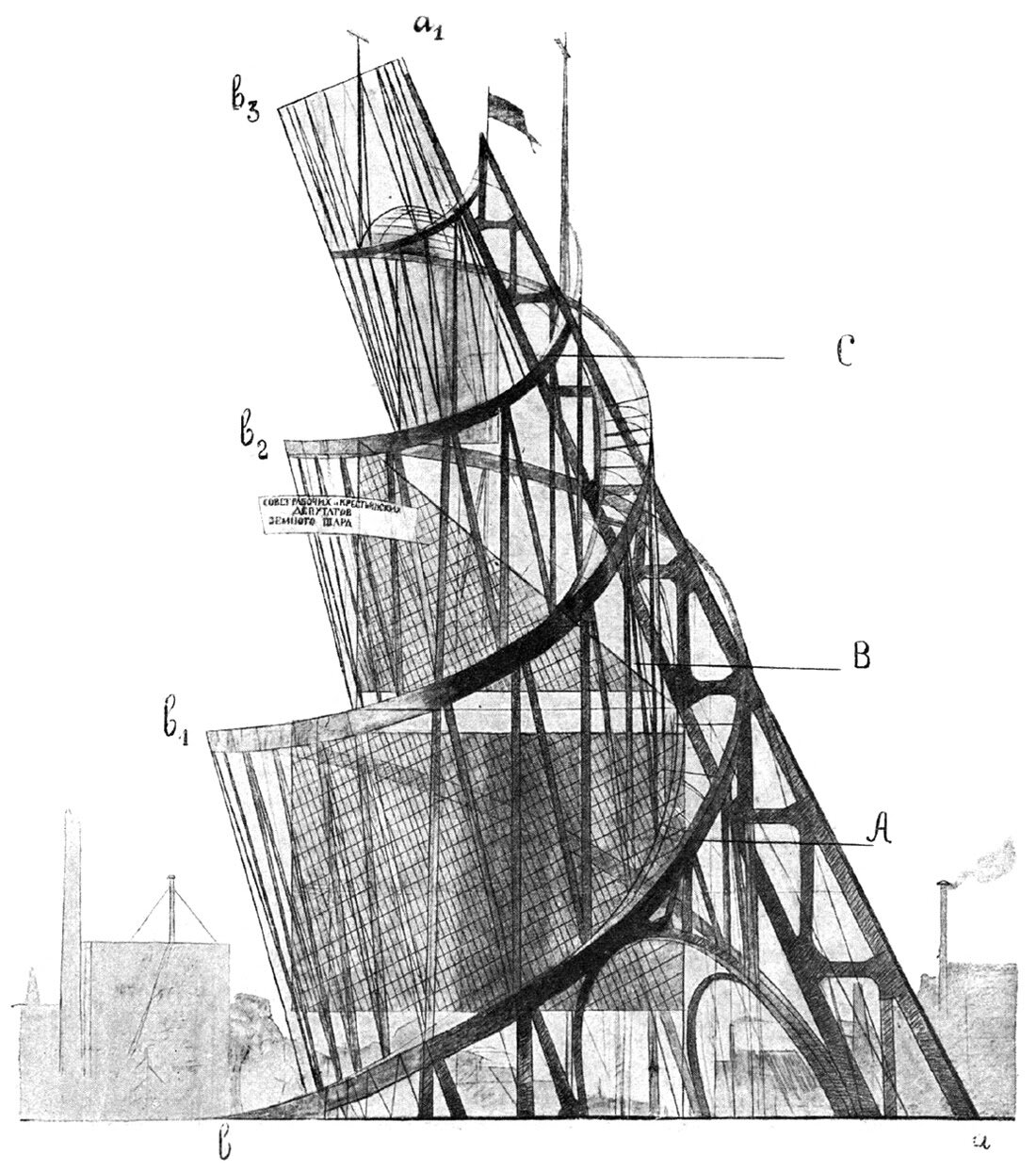
Vladimir Tatlin’s Tower
Tatlin’s Tower has always made me uneasy. There’s something about it’s form that rubs me the wrong way, but at the same time, it’s strangely captivating. In school, I was exposed to it many times in architecture history classes, but it was always glossed over as just another example of Russian Constructivism. Let’s take a closer look and see just how strange it is.
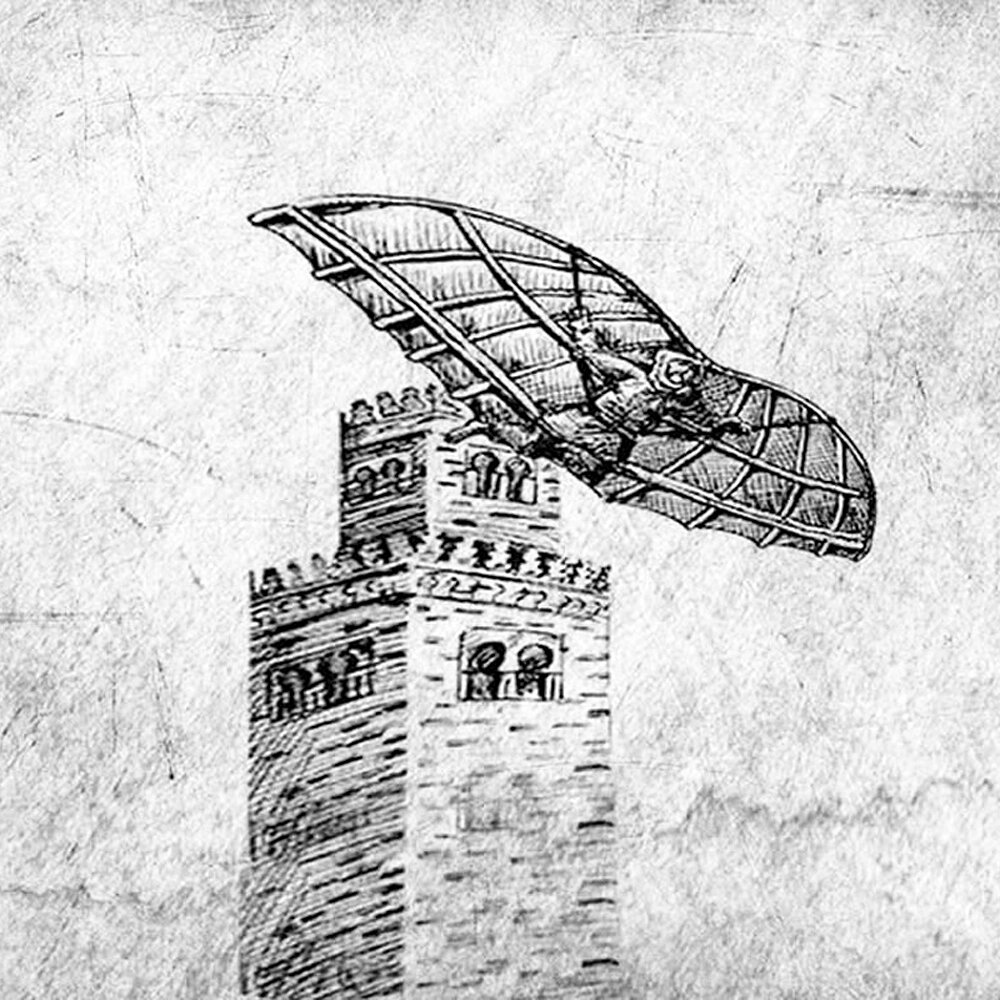
Abbas ibn Firnas’ Attempt At Flight
Abbas ibn Firnas, also known as Armen Firman, was an Andalusin polymath best known for an attempt at flight around 875 AD. Details are scarce, but Firnas allegedly built a pair of wings and jumped from a tower somewhere in Córdoba. His wings allowed him to glide for a bit before crash-landing and injuring his back.
“The instinct to climb up to some high place, from which you can look down and survey your world, seems to be a fundamental human instinct.”
-Christopher Alexander, British-American architect, born 1936
